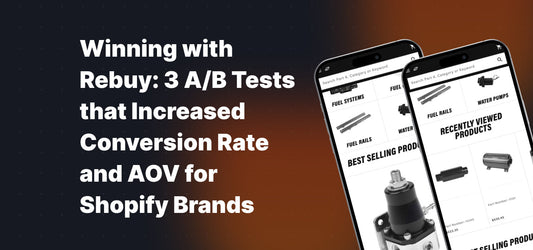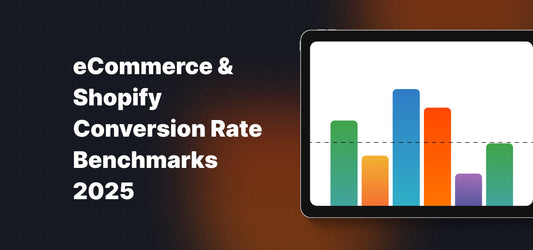Table of Contents
Get useful eCommerce stuff
With more people using online platforms to make purchases, there has been significant growth within the realm of e-commerce business. However, as with general retailers, e-commerce businesses as also subject to seasonality and influenced by trends in the marketplace.
Below, we’ll do a deep dive into what e-commerce seasonality is, the current trends within e-commerce, as well as KPIs to measure in relation to e-commerce seasonality.
E-commerce Seasonality Explained
E-commerce seasonality is a relatively simple concept to understand. It refers to the fluctuations in customer purchasing behaviour that occur throughout the year. During some periods of the year, sales are incredibly slow, whilst other periods are so busy businesses can hardly keep up with the demand.
Think about it this way, during the cold winter months of the year, a retailer selling coats and winter boots will get way more sales in comparison to the hot summer months. E-commerce seasonality is not limited to seasons of the year, such as winter or summer. It also pertains to holidays and special occasions like Christmas and Valentine’s Day.
This seasonality can affect many factors of your business, such as webshop traffic, customers interests, advertising costs and customer purchase intent. So, in order to remain customer-centric, it’s crucial that e-commerce businesses understand this seasonality and how to best harness it within the e-commerce marketing strategy.
E-commerce Trends
There are several predicted trends that are expected to influence the e-commerce industry. In order to navigate and harness the power of e-commerce seasonality, be sure to pay attention to these trends and utilise the ones that can help you in your e-commerce business.
Make Shopping Experiences Holiday-Specific
When it comes to holiday seasons, we all know how much information businesses put out there to attract potential customers. To make the search easier for customers, you can easily tailor your site so that it’s quick and straightforward to find the relevant products, such as grouping all the Christmas related items together on a single webpage.
Using AR to Create Enhanced Online Shopping Experiences
AR (augmented reality) is revolutionising the e-commerce industry. Giving clients the ability to virtually try out items they’re considering buying - whether it’s clothing or home decor - has created a new and exciting shopping experience for customers.
Growing Volume of Voice Search
Using voice search through smart speakers makes it easy for customers to shop online, order groceries and even help them organise their lives. With these speakers becoming increasingly commonplace in homes, e-commerce businesses can use this as an opportunity to harness the power of keyword specific terms and valuable content.
Create Personalised Experiences with AI
AI (artificial intelligence) is another game-changing technology. Its ability to collect and then use data to tailor customers shopping experiences based on their behaviours and actions create unforeseen opportunities for marketers. This tailorization will be seen in areas such as product recommendations and customer service. Thus, such information can easily be used to influence e-commerce seasonality.
Using Chatbots to Improve the Shopping Experience
Improvements with technology and the internet have made it increasingly easier for customers to search for products and buy them with a few simple clicks. However, this has also come with downsides - customers become frustrated quickly when they cannot find something on a website easily.
Chatbots are the solution to this. As with a sales clerk in a brick and mortar store, chatbots can provide customers with quick, effective customer support.
Mobile Shopping is Becoming More Popular
Today’s customer wants to be able to make a purchase whenever and wherever they are. With mobile shopping, this is becoming more simple as it gives customers the opportunity to go into stores and see and try products first hand, but purchase later or online. So, to utilise this trend, be sure that your e-commerce business has a website that’s responsive on mobile devices.
Adding More Payment Options
Customers want convenience when making an online purchase. This also encompasses the methods of payment e-commerce businesses make available to their customers. Giving them a variety of options - such as PayPal or credit card - is likely to result in higher conversion rates.
Additionally, giving customers the choice to safely save their payment details on your site means it’ll be even easier for them to make a purchase from your e-commerce website the next time they’re online.
Subscription Models are Growing
Subscription-based models have become more popular, especially within the online sphere of business. Not only does a subscription service result in customers returning to your online site repeatedly, but leads customers to become loyal supporters of your business.
Say Yes to Sustainability
The shift towards sustainable business is becoming more and more apparent. Consumers - as well as other business stakeholders - are becoming more aware of the environment and the need to create a sustainable future.
This changing mindset is causing consumers to demand better, more sustainable practices from businesses - even e-commerce ones. As an e-commerce business, it’s far simpler than you think to implement such practices. Small changes such as using eco-friendly packaging, going all-digital or even using recycled materials in your products are all easy ways to become a more sustainable business and make your customers happy.
Conversion Rate Optimisation
To be a successful business within the realm of e-commerce and create conversions, you need to make the customer journey as smooth as possible. To do this, e-commerce businesses should optimise their websites in order to increase conversion rates.
To do this, e-commerce businesses should, firstly, have a deep understanding of their target customers. Understanding questions such as what motivates customers to interact with your business? Or what elements of your website do current customers like or interact with the most? Once you have a good understanding of your customers, you should optimise your site accordingly.
In line with the above, e-commerce businesses can also utilise A/B testing to determine what elements of your website capture your audiences attention, and then optimise the website based on that information.
How to Measure E-commerce Seasonality
There are numerous KPI’s for an e-commerce site to track which help to determine user experience, how well the e-commerce store is operating and how to make improvements, customer satisfaction, marketing efforts and more. However, these three measurements are especially important when wanting to measure the success of your e-commerce business in relation to seasonality.
Inventory Accuracy
This KPI measures how accurate your inventory level is on your software, relative to your physical inventory. Should there be a discrepancy, you will find that you either have more stock on hand than needed or that you have too little stock.
Too little inventory can result in your e-commerce business struggling to fulfil and send out orders. This type of scenario would be especially bad during an e-commerce business’s peak season.
Peak Order Rate
The peak order rate measures the number of orders that leave your business’s warehouse and are delivered to the customer without any issues occurring. Having a warehouse management system can help mitigate imperfect orders and alert you before they are distributed to the customer.
Return Rate
As the name suggested, this KPI measure will calculate the volume of orders sent back to you by customers.
One of the most important issues this measure will highlight is whether there is a problem with your business’s supply chain. High rates of return are a bad sign and could indicate several potential issues such as damages, whether there are issues within your supply chain, causes for returns and late deliveries.








